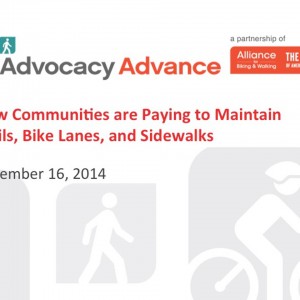
Webinar from Advocacy Advance, a partnership between the League of American Bicyclists and the Alliance for Biking & Walking, presents options for communities to pay for maintenance of trails, bike lanes, and sidewalks.
View this complete post...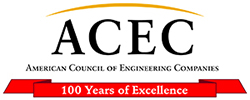

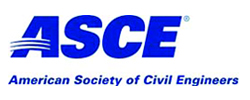





John Hennessy III,
P.E.

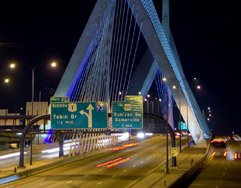
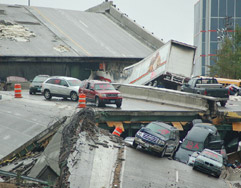
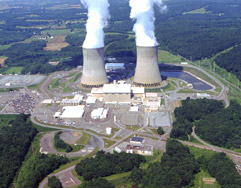
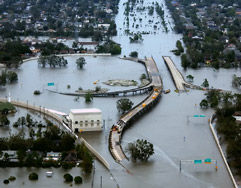

Webinar from Advocacy Advance, a partnership between the League of American Bicyclists and the Alliance for Biking & Walking, presents options for communities to pay for maintenance of trails, bike lanes, and sidewalks.
View this complete post...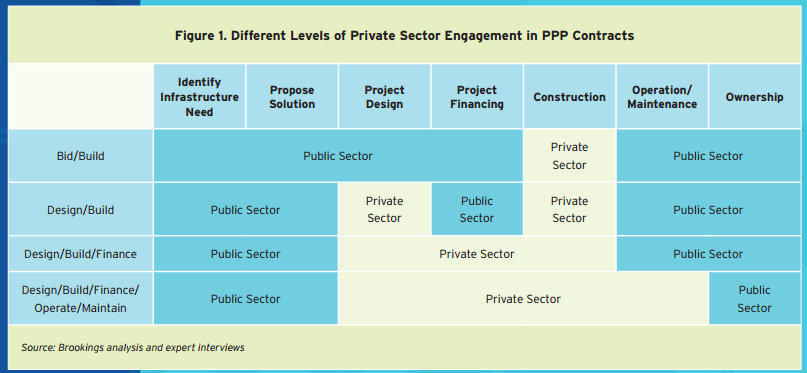
BROOKINGS METROPOLITAN POLICY PROGRAM
Despite its fundamental and multifaceted role in maintaining national growth and economic health, infrastructure in the United States has not received an adequate level of investment for years. Political dysfunction, a challenging fiscal environment, greater project complexity, and the sheer size of the need across different sectors are forcing leaders across the country to explore new ways to finance the investments and operations that will grow their economies over the next decade…Part of this exploration means new kinds of agreements between governments at all levels and the private sector to deliver, finance, and maintain a range of projects. Beyond simplistic notions of privatization, the interest is in true partnerships between agencies, private firms, financiers, and the general public. Many nations already successfully develop infrastructure in this manner today.
Despite its fundamental and multifaceted role in maintaining national growth and economic health, infrastructure in the United States has not received an adequate level of investment for years. Political dysfunction, a challenging fiscal environment, greater project complexity, and the sheer size of the need across different sectors are forcing leaders across the country to explore new ways to finance the investments and operations that will grow their economies over the next decade.
View this complete post...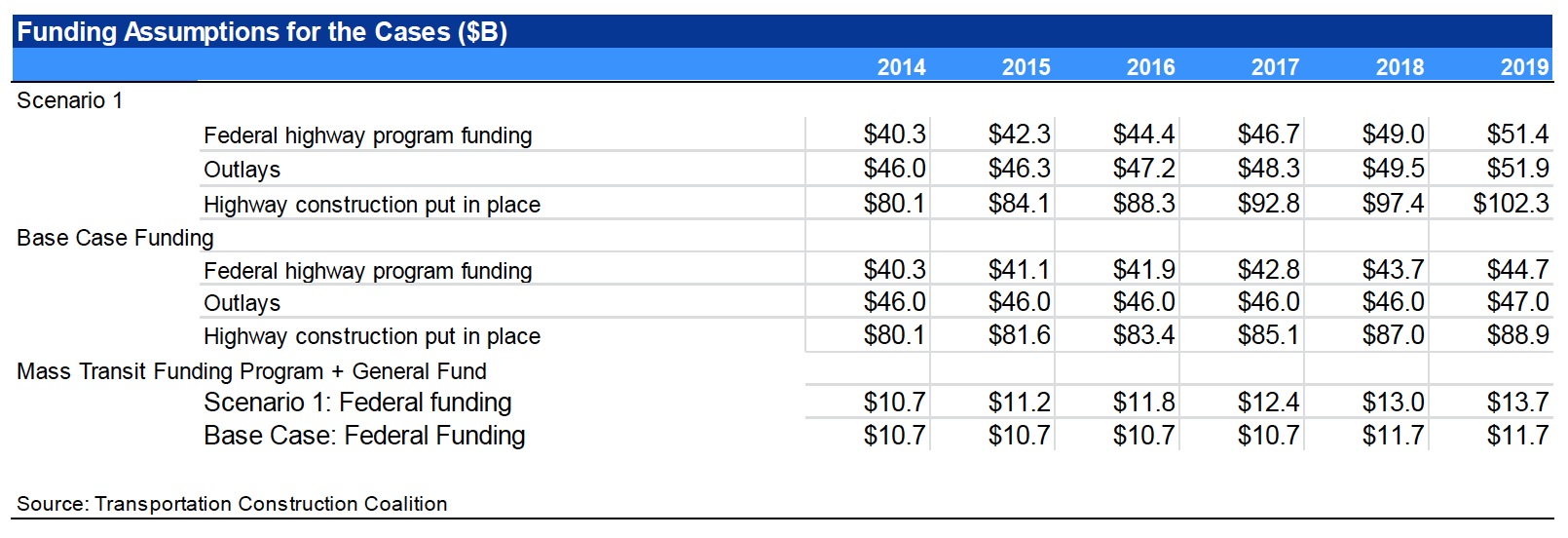
TRANSPORTATION CONSTRUCTION COALITION
Federal transportation spending expands the capital stock of the US economy, drives the production and delivery of goods and services, and positively affects business and household incomes. It also enhances the transportation system’s operational capacity by reducing travel times and costs. This results in greater accessibility for individuals, households and businesses, more efficient delivery of goods and services, improved life styles and standards of living, and safer roadways.
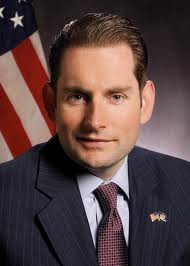
Mike Elmendorf was named President and CEO of the Associated General Contractors of New York State (AGC NYS), New York’s leading construction industry association, in February 2011.
“…there has been a number of bank settlements and other circumstances that have resulted in literally billions of dollars of found money arriving at the state treasury, and the result of that is that you’ve got a unique, really probably once in a lifetime opportunity to use those billions of dollars to make long-term significant investments in improving our infrastructure.”
View this complete post...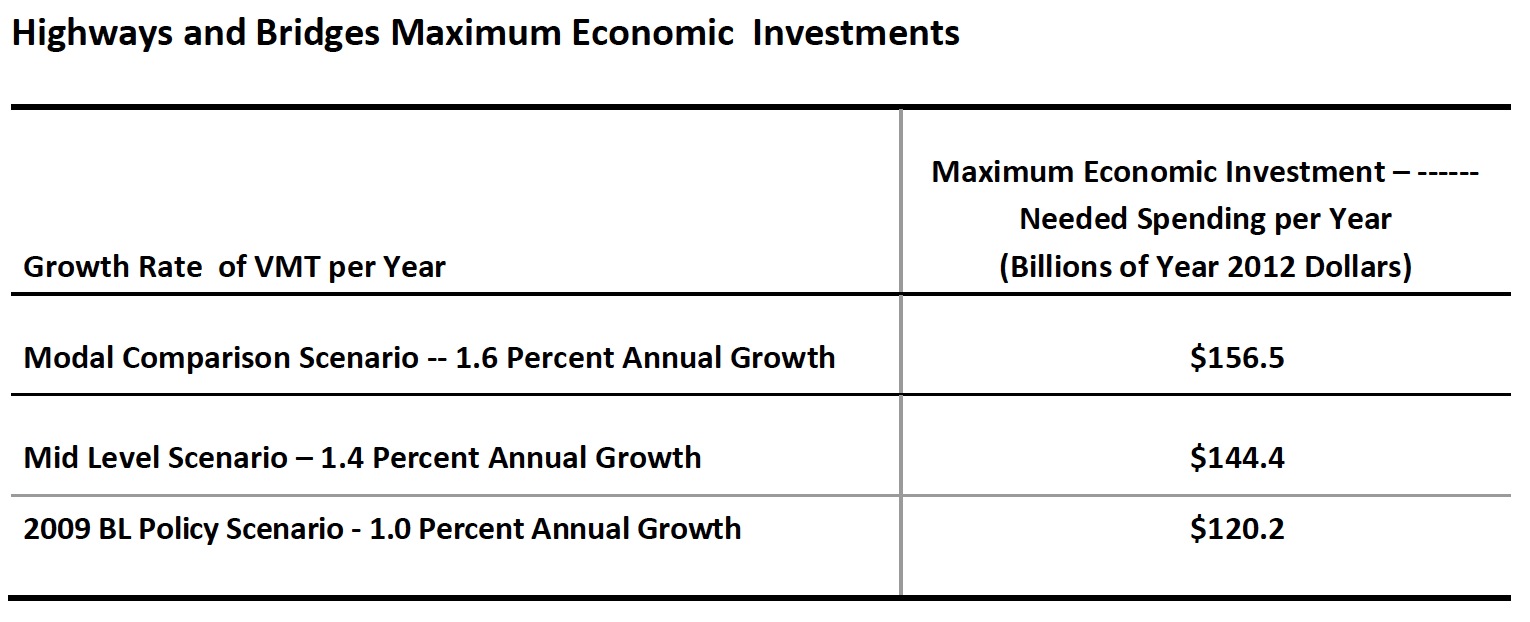
AMERICAN ASSOCIATION OF STATE HIGHWAY AND TRANSPORTATION OFFICIALS (AASHTO) An annual investment of $120 billion for highways and bridges between 2015 and 2020 is necessary to improve the condition and performance of the system, given a rate of travel growth of 1.0 percent per year in vehicle miles of travel, which has been AASHTO’s sustainability […]
View this complete post...Innovation Newsbriefs
Vol. 25, No. 16
Has the time come to reconsider the way we pay for transportation? Should the Highway Trust Fund and its fuel tax revenue continue as the main source of funding for the federal transportation program? If not, what are the alternatives? And more broadly, is the age of long term reauthorizations and of heavy reliance on federal funding, drawing to a close?

ENO CENTER FOR TRANSPORTATION
The current federal program for funding surface transportation infrastructure in the United States is broken. Since 2008, the U.S. Highway Trust Fund (HTF) has repeatedly been on the brink of insolvency, necessitating five infusions from the U.S. Treasury’s General Fund. Many solutions have been proposed to stabilize funding for the federal surface transportation program, but each has confronted substantial political barriers. This study details the circumstances that have led the U.S. transportation program to its current funding situation and explores how other nations have created sustainable mechanisms for ensuring adequate national level investment in surface transportation systems.

Kevin DeGood is the Director of Infrastructure Policy at American Progress. His work focuses on how highway, transit, aviation, and maritime policy affect America’s global competitiveness, access to opportunity for diverse communities, and environmental sustainability.
“To a certain extent we’re victims of our own success…For all of its problems, we have still a fundamentally sound and fantastic transportation system. Again, none of that means that we don’t need investment. None of that means that there aren’t real challenges, because there certainly are and that’s what we’ve dedicated ourselves to trying to solve.”
View this complete post...
TRANSITCENTER
Ultimately, the effect of the tax benefit for commuter parking is to subsidize traffic congestion by parking roughly 820,000 more cars on America’s most congested roads in its most congested cities at the most congested times of day. It delivers the greatest benefits to those who need them least, typically upper-income Americans, and costs $7.3 billion in reduced tax revenue that must be made up through cuts in government programs, a higher deficit, or increases in taxes on other Americans.
Follow InfrastructureUSA
Video, stills and tales. Share images of the Infra in your community that demands attention. Post your ideas about national Infra issues. Go ahead. Show Us Your Infra! Upload and instantly share your message.
Is the administration moving fast enough on Infra issues? Are Americans prepared to pay more taxes for repairs? Should job creation be the guiding determination? Vote now!
What do the experts think? This is where the nation's public policy organizations, trade associations and think tanks weigh in with analysis on Infra issues. Tell them what you think. Ask questions. Share a different view.
The Infra Blog offers cutting edge perspective on a broad spectrum of Infra topics. Frequent updates and provocative posts highlight hot button topics -- essential ingredients of a national Infra dialogue.
It is encouraging to finally see clear signs of federal action to support a comprehensive US infrastructure investment plan.
Now more than ever, our advocacy is needed to keep stakeholders informed and connected, and to hold politicians to their promises to finally fix our nation’s ailing infrastructure.
We have already engaged nearly 280,000 users, and hoping to add many more as interest continues to grow.
We require your support in order to rise to this occasion, to make the most of this opportunity. Please consider making a tax-deductible donation to InfrastructureUSA.org.
Steve Anderson
Managing Director
SteveAnderson@InfrastructureUSA.org
917-940-7125